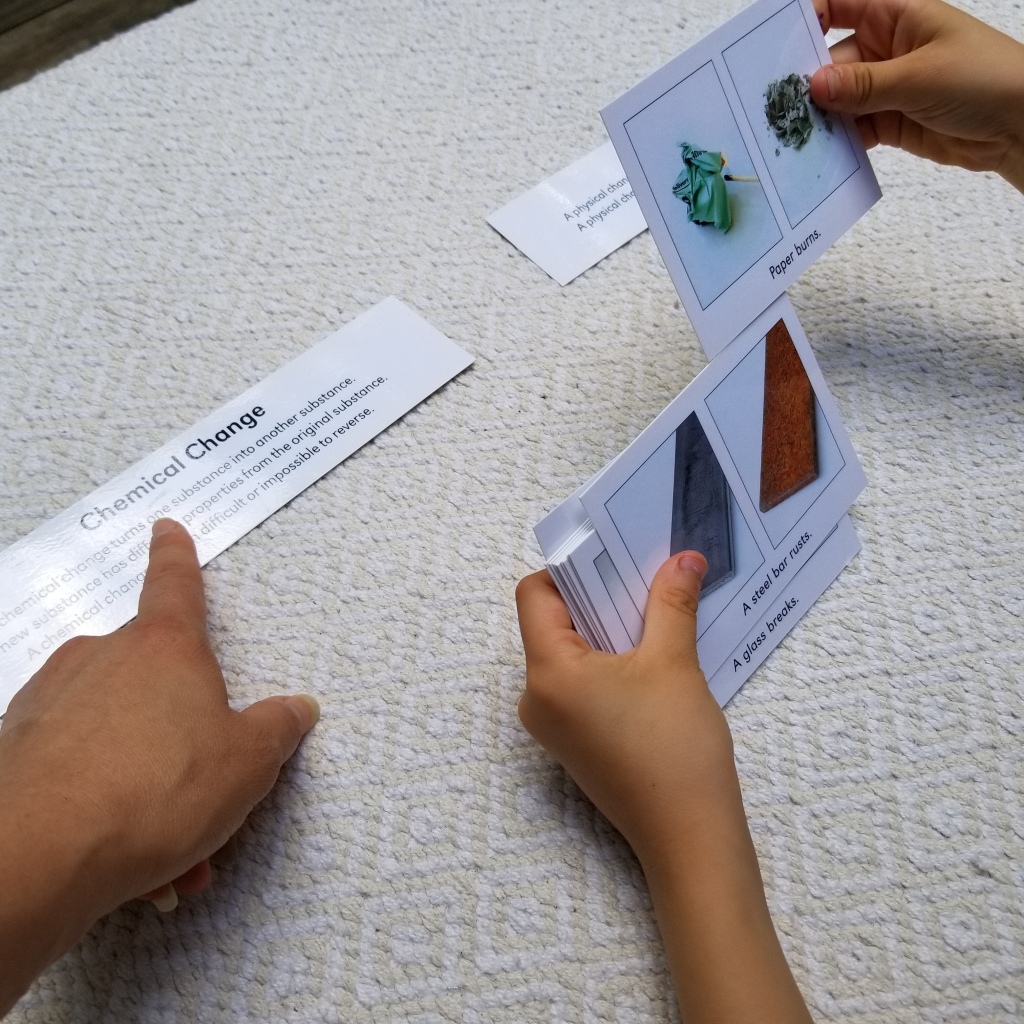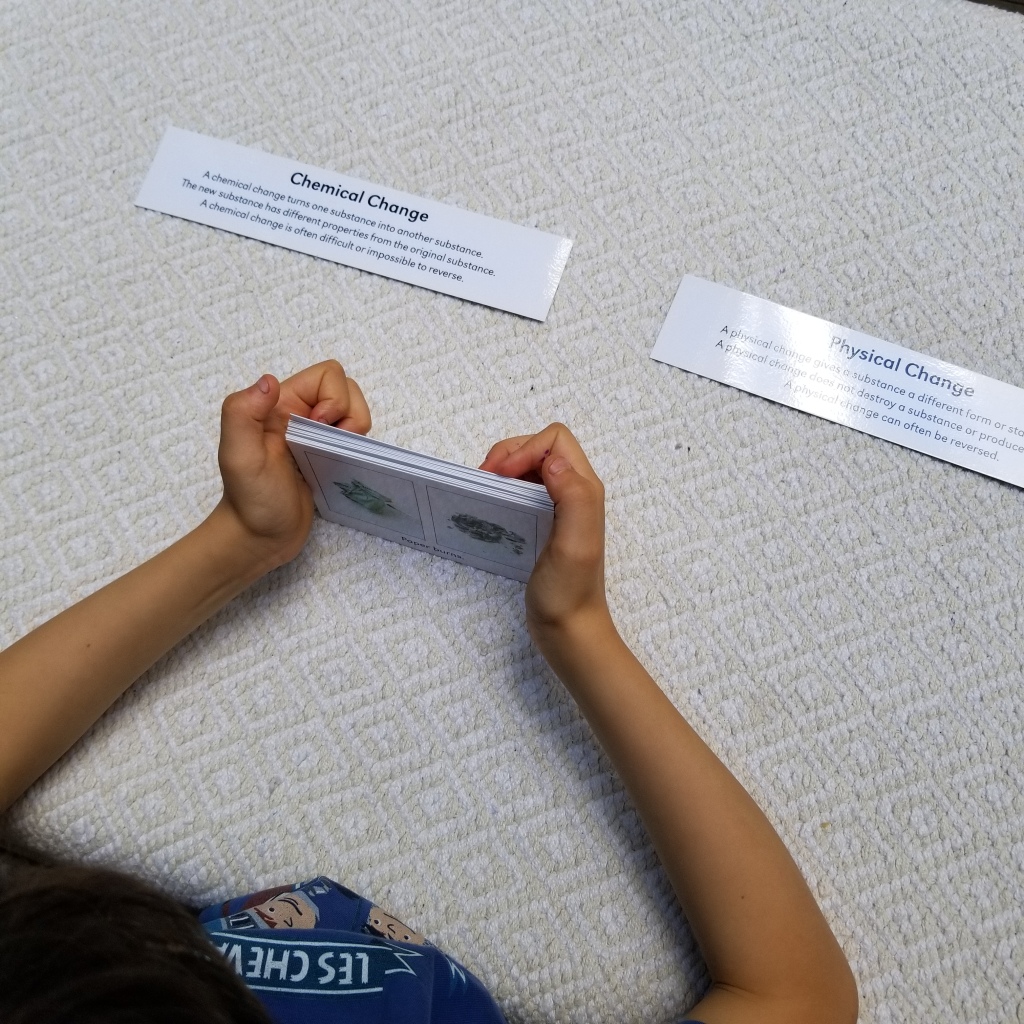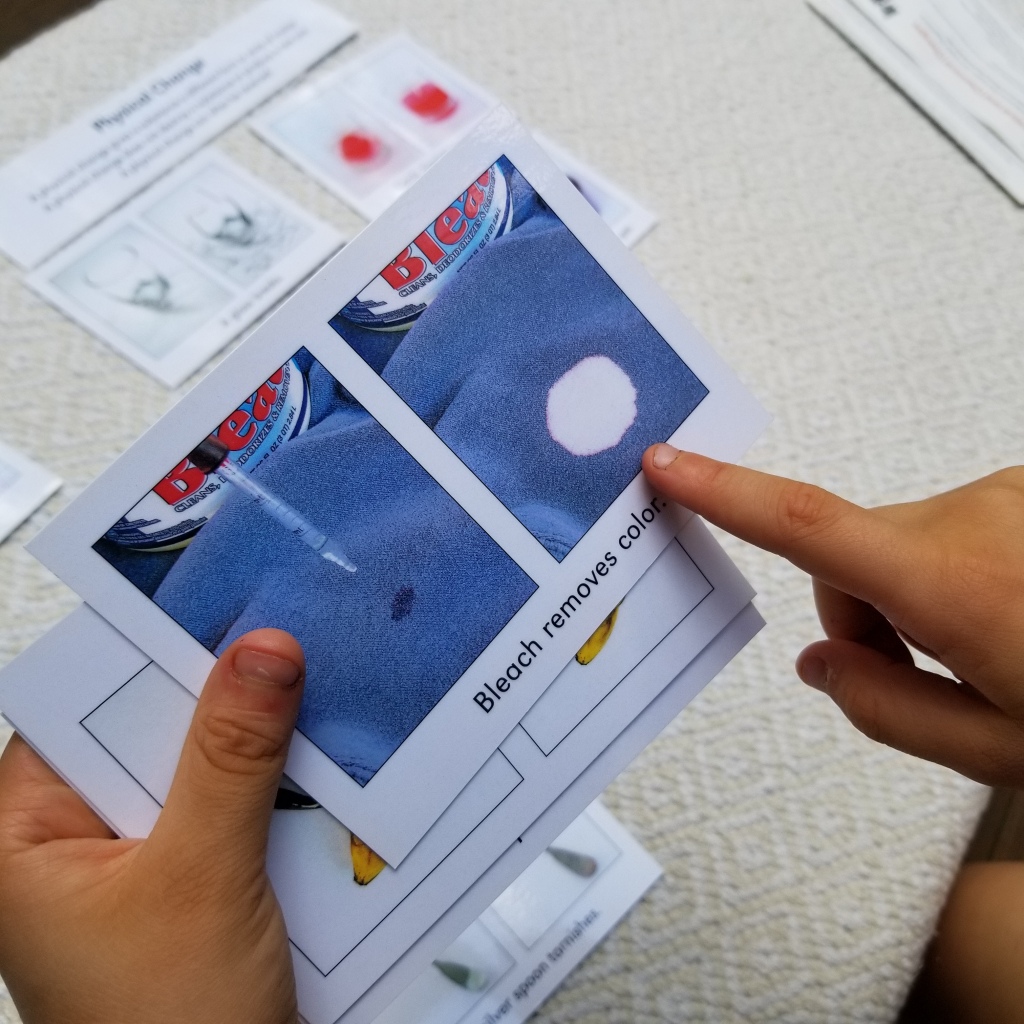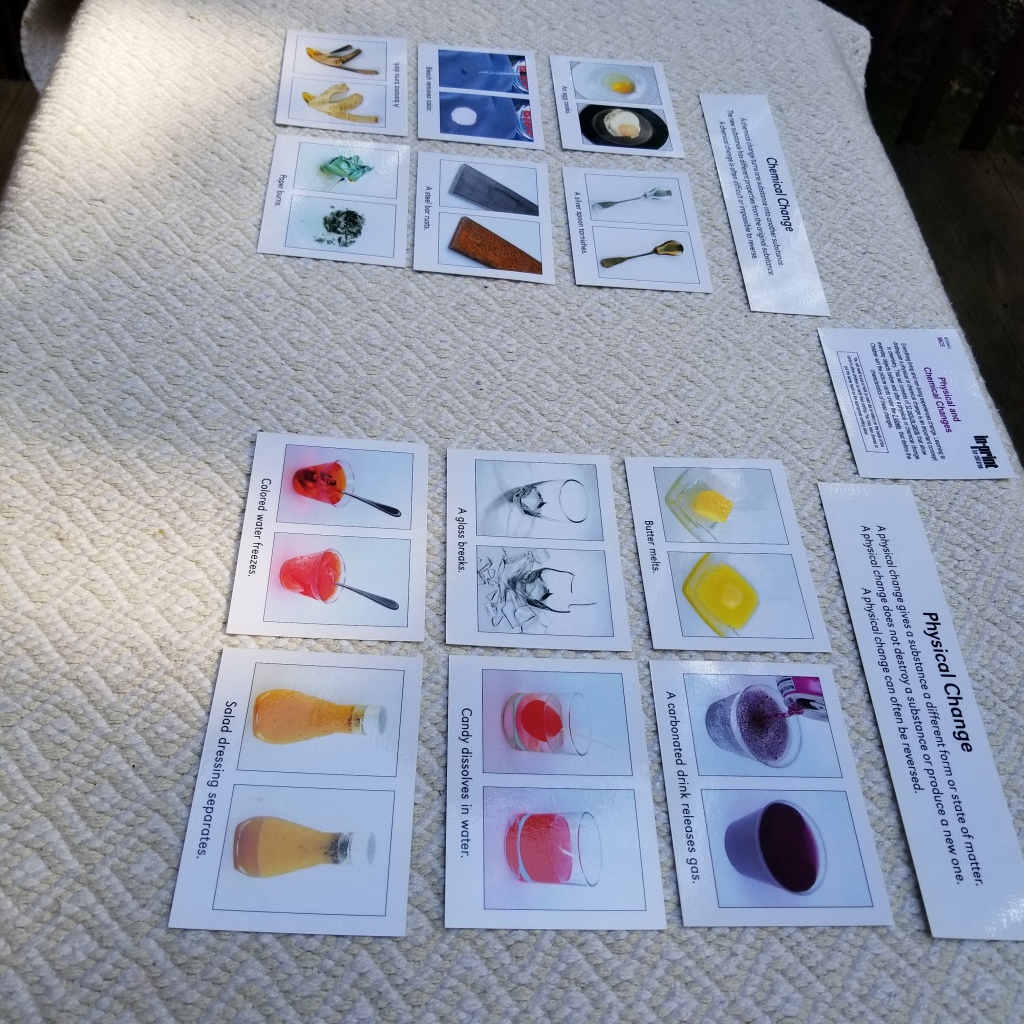Chemistry 6-9

In the Montessori education, chemistry begins in primary classrooms with the water cycle, atoms, the states of matter, and many experiments that involve mixtures.
It’s only in elementary classrooms that chemistry becomes more explicit. Children understand that chemistry is part of their daily life. They are offered experiments that they can replicate independently. They learn the scientific method for conducting experiments. Each year, the same scientific concepts are revisited; and each year, they learn and experience the same concept on a new level.

The material I am sharing here, Physical and Chemical Changes by in-Print, is constantly on our Chemistry shelf. Today, we decided to revisit our properties of matter, and this was actually a good idea, as we had forgotten a bit how to determine a physical change from a chemical change.
Materials
The set contains:
- 2 large titled cards with definitions for physical change and chemical change
- 12 cards with colorful glossy pictures to sort
- 1 double-sided extensive instruction sheet explaining the context for teaching this, prerequisites, information to educate the adult, scripted lesson for precise scientific language, answers to questions that may arise, follow-up activities, and more.

With this material, not only you can feel confident to teach this topic, but you will certainly highly inspire your learners and boost their self-confidence. Why? Because the lessons are written with children in mind, and the information really gets through. It gets the child to think about of cause and effect before making choices. The pictures reflect things that they experience everyday (melting butter, rust, lollipop…).
How it works
There are prerequisites. The children should be able to state all three states of matter. They should also be familiar with properties of a substance (texture, color, hardness…). Then you would present how matter can change. You may present using real objects (ice cube, oxydating banana.. ). You would read the definitions, think aloud with the child, and sort together.

Sorting cards 
Reading definitions 
When hesitant, read the definition again 
Ready to sort the mixed stack

You may want to add stickers on the back of the cards as control for errors. You can invite the children to use this material on their own after the presentation. The lesson contains explanations for each card if you’d like to use this to inform the child with precise scientific language.
Follow-up activities are suggested, as well as books and Internet resources. I hope you excited to read about this material. We have manipulated it at least a dozen times, and the children still go back to it.

Ready for a lesson? Please subscribe to receive a notification of my next post.

Gracias por compartir, tus post son de gran ayuda
LikeLike
De nada ! Gracias por leer mi blog!
LikeLike